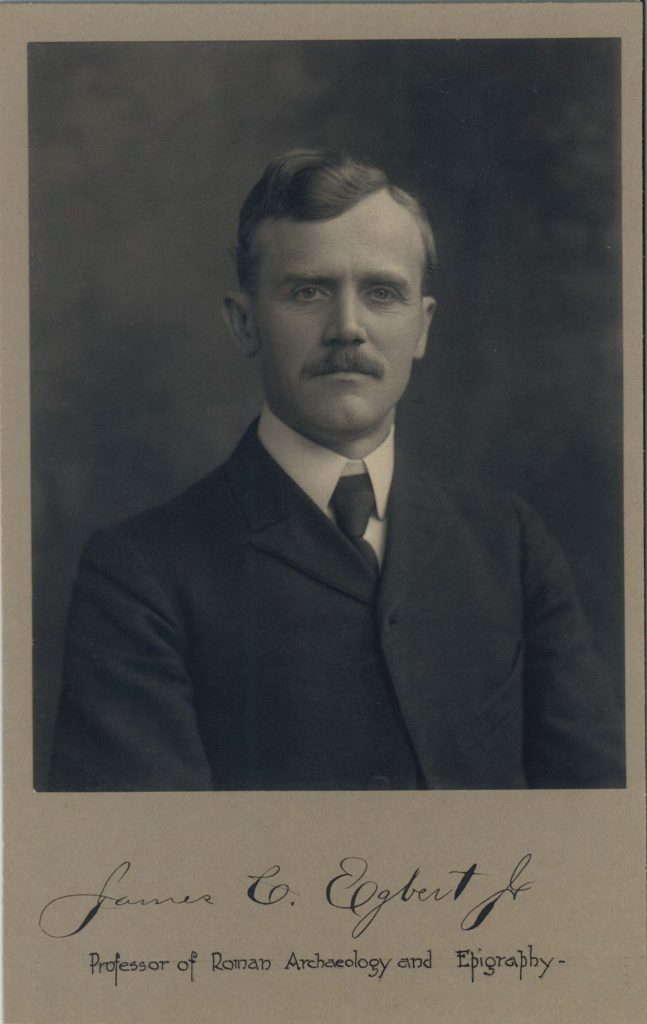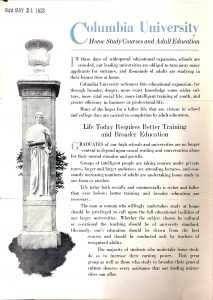In the 1800s Columbia preferred that its students live at home. And the first women students in the 1880s also had to stay at home since they could not attend lectures. But a 1919 initiative enabled Columbia to offer new educational opportunities to students at home all over the world.

In 1919 Columbia University started an experiment in adult education by offering non-credit courses for home study or by correspondence. In order to convince the Trustees that the University could offer reputable, academic teaching by mail subscription, Director of Extension Teaching James C. Egbert appealed to their sense of patriotism: Columbia had a duty to care for the education of servicemen stationed here and abroad, those who could only reach the University via the mail. In his words, “It would be a great honor and a great privilege for us to help in such a service as this.” The Trustees approved the proposal, but only as long as none of the courses were offered for academic credit.
Home Study, as the new division in the University Extension was called, aimed for very high standards: each class had a limited number of students to ensure personal contact with and appropriate level of supervision by the instructor; all instructors were regular members of Columbia’s teaching staff and University faculty had to approve the materials before a course was offered; prospective students faced an elaborate admission process and had to work closely with field advisers. Courses were offered in business, philosophy, romance languages, English, literature, history, psychology, mathematics, the Classics, and a wide range of other subjects.
To reach this new audience, Home Study was advertised on the radio and in “reputable” journals. They made contacts with the Boy Scouts, the Merchant Marines, educational officers in prison service, and other non-profit organizations. They even offered high school subjects to prepare students to enter college and the New York State Department of Education allowed Home Study students to take the Regents examinations. Students enrolled from practically every state in the Union and many countries abroad, “with at least one student in every continent of the globe.” From 156 students in 1920, by 1929 there were over 10,000 students enrolled annually for non-credit courses.

However, in order to maintain these high standards, Home Study needed high enrollment numbers. Attracting more students meant more advertising, which many in the University felt was too commercial, inappropriate for an educational institution, and harmful to the University’s reputation. The depression years of the early 1930s also struck deeply at Home Study: by 1933 there was a 40% decrease in registrations. And so, on January 1, 1937, Home Study was discontinued and all registration closed on December 31, 1937. In less than 20 years, Home Study distributed about 100,000 courses to about 65,000 individuals.
To learn more about Home Study, from those who taught classes in the division, see James C. Egbert’s “University Extension and Home Study at Columbia” Columbia Alumni News Vol. XIV, No. 9, November 24, 1922, 99-100, and the volume of A History of Adult Education at Columbia University, edited by Angus Burrell in the Bicentennial History (1954). The University Archives also holds the Home Study records, 1919-1951.